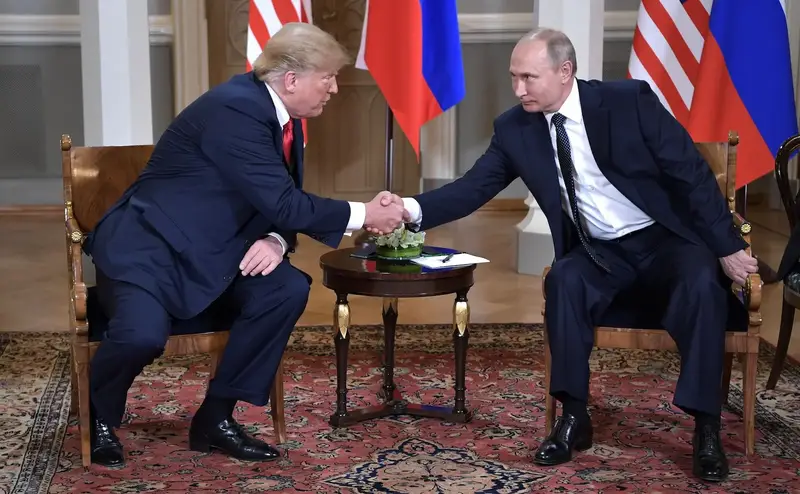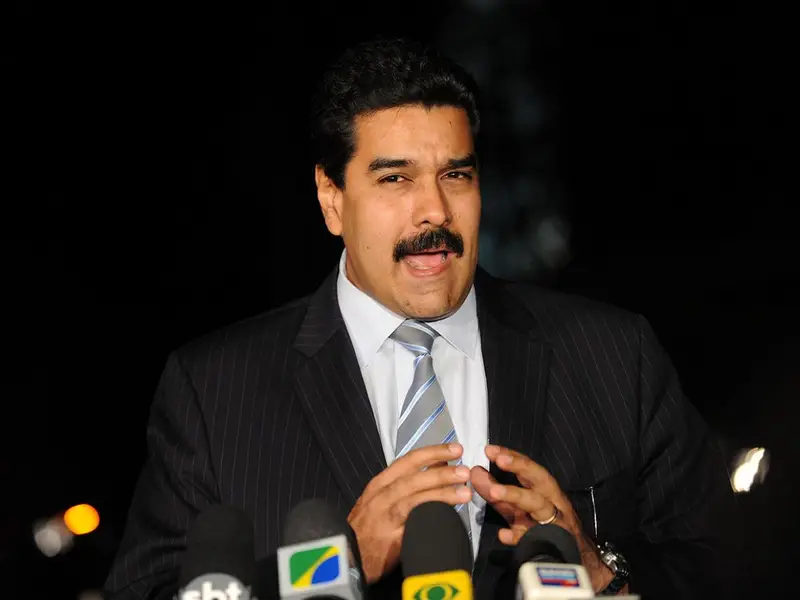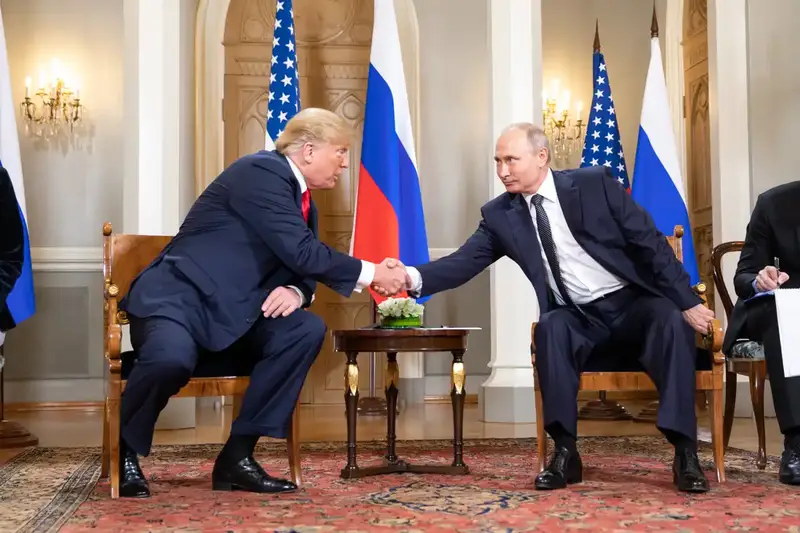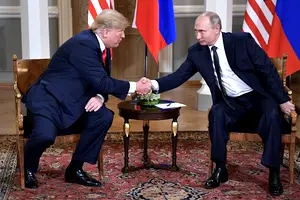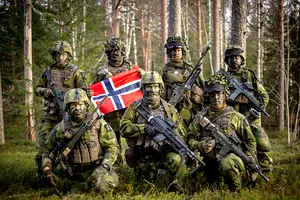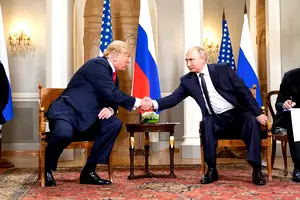GEOFOR's interlocutor is Aleksey Maslov, Director of the Institute of Asian and African Studies (IAAS) at Moscow State University, a Russian Orientalist, Sinologist, Doctor of Historical Sciences and Professor.
GEOFOR’s interlocutor is Aleksey Maslov, Director of the Institute of Asian and African Studies (IAAS) at Moscow State University, a Russian Orientalist, Sinologist, Doctor of Historical Sciences and Professor.
- Russian Foreign Minister Sergey Lavrov recently had an extremely busy schedule in Laos as part of ASEAN events. How is Russia’s latest pivot to the East progressing, what are the prospects and challenges, given that the West and the U.S. clearly do not intend to leave the region without a fight?
- Russia is methodically developing deeper contacts with Asia, and it is obvious that in the near future interactions with several Southeast Asian countries will come to the fore. Undoubtedly, in terms of trade volume and mutual interests, no other country can match the level of interaction between Russia and China, but the key here is the combination of new, creative ideas. Russia is also using already established mechanisms, including work under the Treaty of Amity and Cooperation in Southeast Asia, which it joined 20 years ago. Key areas could include various aspects of security, such as cybersecurity, food security, cooperation in financial systems, transportation security, and, of course, education and training of the new generation of specialists. This process is slow, given the peculiarities of communication with representatives of Southeast Asian countries and their extreme caution in establishing new partnerships. However, the «litmus test» for such interest could be the ability to find more effective ways to implement their economic and political sovereignty — here Russia unwittingly acts as a rational and positive alternative to both U.S. pressure and China’s influence. Russia is interested in building a new Eurasian security architecture and sees ASEAN as one of the key partners in this context.
It is obvious that the escalation in the East and Southeast Asian region will only increase, which can affect the deterioration of the quality and security of trade and economic relations. The U.S. is promoting the creation of blocs that will essentially «push» ASEAN away from solving key regional issues — first and foremost AUKUS, the U.S.-Japan-South Korea military-strategic cooperation, as well as the «Quad» of Tokyo-Seoul-Canberra-Wellington. All these blocs are created on the basis of the old confrontational architecture, aimed at containing and limiting ASEAN’s influence. The only way out is to formulate new global goals for the future, to attract the interest of Southeast Asian countries, to open up, and to focus on trade and technological development.
- Russia and China continue active cooperation; recently there was a meeting between Vladimir Putin and Xi Jinping, Minister Lavrov and his colleague Wang Yi, which covered a wide range of issues — political, economic, military, and Ukraine, especially in connection with the visit of Ukrainian Foreign Minister Kuleba to China, trade, and many others. How are things going and what can we expect in the future? What measures is the Russian side ready to take to promote cooperation in these areas?
- Let’s start with these areas. First of all, today, despite the noticeable development of trade, investment cooperation is slow and poorly developed. It is very difficult to calculate the real volume of cooperation. China’s investment in Russia is about 0.4% of the world total. Russian investments in China are about 0.03% of all investments coming to China. Therefore, when we talk about development plans, we mean the development of investment cooperation. Let’s break it down into points.
Trade economy: It is closely related to the development of transportation logistics. We are gradually overcoming the so-called «bottleneck on the Asian polygon». When most of the cargo from Russia went to the West, the railways to the East were not modernized. Now that our logistics are directed to the East, it is necessary not only to develop the railways, but also to digitalize all processes, the most important of which is the implementation of smart wagons and smart management. China is also interested in this process, as the number of border crossings for freight transport between our countries is expected to increase by 2030. These crossings need modern equipment and railway operations need to be improved, which requires new technologies that China currently possesses. We can also talk about cooperation in the field of high-speed transport. In addition, the dialogue on the construction of a highway from China to Moscow via Kazan has resumed, with Avtodor actively involved in multimodal transport.
Military technology: This is a completely closed part of cooperation, but here we can highlight cooperation in the development of missile defense systems, new types of air defense systems, and new weapons to protect the borders of Russia and China. Russia is also interested in joint development of drones and unmanned vehicles.
Science: First of all, the transition to joint scientific development. Currently, there are about a hundred agreements between our universities, but we do not have any scientific laboratories. When we talk about science, we mean the creation of new joint discoveries, laboratories and research centers. This includes the development of nanomaterials, nanopharmacology, medicine, permafrost studies, and agriculture. Most importantly, artificial intelligence and augmented reality, as China has made significant progress in these areas. They have ready-made solutions that Russia has not yet approached. Conversely, Russia has interesting developments in systemic boards that can be jointly implemented in the future.
Financial interaction: Transition to electronic payments, moving away from the dollar, creating common payment systems invisible to American systems, and developing cryptocurrencies.
Agriculture: Russia is probably the leader here. It supplies China with about 50% of flax, rapeseed oil and about 40% of soybeans. Russia is interested not only in sales, but also in creating joint agro-farms in Russia or China for production, packaging and delivery. For example, the experience of Altai producers: they produce grain, and in China it is ground into flour in a joint mill, then packaged and sold in China.
Industry: This is mainly about technology and production transfer. At present we see only the sale of Chinese goods to Russia (for example, last year China supplied 900,000 cars to Russia). We are talking about joint production of machinery and equipment.
Energy: We are discussing the transfer of excess capacity from Russia (Far East) to China. This includes expanding cooperation in the gas sector. We are ready to launch «Power of Siberia 2». This also includes the development of the Far East and the Arctic, talking about Chinese investment in these regions, as well as in TASEDs (Territories of Advanced Social and Economic Development). This includes attracting investment in agricultural production projects in the Far East, the production of medical equipment, fuel and construction materials. It’s not so much about China’s money as it is about joint development. The emphasis will be on the development of TASEDs such as Nadezhdinsky, Berezovsky, and the free port of Vladivostok. Russia will designate forums to be held on its territory (for example, EEF). The structure of such events has been significantly redesigned in order to change the topics. Now, strategic meetings deal with issues of joint cooperation. Russia has strengthened cooperation at the organizational level — Roscongress, the Ministry for the Development of the Russian Far East and Arctic, the Far East Development Fund — with representatives of large Chinese companies, with negotiations taking place almost every week. Russia has already begun to specify its actions on certain issues. In addition, Russian companies have started training their employees to work with Chinese colleagues (e.g. proper packaging of investment projects, calculation of their profitability, etc.). It is obvious that the effect of the above-mentioned measures will be visible in 5–7 years, as the Russian business has been oriented to the European market until now. It takes time to enter and restructure the Chinese market.
- Many experts talk about the presence of financial and economic problems in the interaction between Moscow and Beijing. Is this true, and what are the real difficulties in Russian-Chinese cooperation? And most importantly, is there an understanding and ways to solve them?
- Let’s move from the general to the specific. First of all, the main obstacle is the previously developed schemes of international interaction by Russia. They were previously applied to Europe, but they are not applicable to China. At present, the largest companies in the Russian Federation are forced to retrain their personnel to work with China. Companies such as Gazprom, Sberbank, and VTB have already actively begun this process. By «updating» the methodological personnel, Russian companies will be able to prepare managers capable of working with the Chinese markets (we are talking about intercultural and business communication).
It is important to note that there is a critical lack of knowledge between Russian and Chinese companies about each other. Chinese entrepreneurs have a very poor understanding of how the Russian market works, and Russians, in turn, do not understand how the Chinese market works. As a result, only the largest companies (Arctic-2, Yamal-LNG) are developing, while small and medium-sized enterprises (SMEs) are practically not developing because they do not have the funds to retrain their staff.
Another weakness in the relationship is the lack of monitoring studies. There is simply nowhere for business representatives to order a truly in-depth study of a particular Chinese market (e.g. motorboats) in order to realistically assess their chances of entering that niche. In essence, such a handbook would be a guide to action that would promote the development of SMEs. However, there is no such thing in Russia, and if there is, the analysis is not accurate and deep enough.
It is also important to mention bilateral mistrust. Businesses on both sides are often wary of establishing relations with each other. Russia needs to convince Chinese companies of the stability of Chinese investments in Russia. More than 90% of Russian businessmen who have managed to enter the Chinese market say that they have absolutely no idea how to communicate with the Chinese. It is not a question of language, but of approach and mentality.
Another problem is the long establishment time. It takes years to be successful in the Chinese market, because a one-month work is not enough to establish strong connections. Russian businessmen, on the other hand, want to get results too quickly. They need to understand that this process can take up to 5–7 years.
In brief:
• Varying «packaging» of investment projects
• Problems with mutual settlements
• Difficulties in business adaptation: Russians in China, Chinese in Russia
• Lack of understanding of local peculiarities. The Chinese do not understand that business in the Russian Far East is different from business in Moscow, and Russian companies do not understand that southern and northern China are also different.
• A large number of organizations initially designed to improve economic cooperation, but in reality, they only create the illusion of cooperation.
- How to solve these problems? Is it possible?
- It is impossible to solve the problems completely; we can only smooth out the sharp edges. This can be done by training highly qualified personnel. As I said earlier, knowing the language and understanding the region are two completely different things. There are plenty of people in Russia who are fluent in Chinese, but they have absolutely no understanding of how management and marketing work in China, what the investment climate in the region is like, and so on. It will take time to prepare such people. Probably, this problem will be solved within 4–6 years, because it is impossible to teach business communication with China in just one course of lectures. Objectively, Russia started training such personnel with a considerable delay because we were not ready to work with Asia.
Smoothing things out will also help eliminate inefficient organizations involved in foreign economic circulation with China. Russia must encourage small and medium-sized businesses to enter the Chinese market. The successes in Russia’s entry into the Chinese market were achieved thanks to individuals, not organizations.
Another point is the success story. Russia needs an example of a successfully implemented project, especially in unusual areas (for example, there was a wide-body aircraft project, but it failed). This project should demonstrate a certain level of trust between the parties, which will stimulate business for such interstate cooperation. So far we have no fruits of joint production — no car, no computer. As soon as there is a success story, it will immediately break the parties’ mistrust of each other.
So it is important to note that at the beginning of cooperation between Russia and China, both sides had different ideas. Now it will take us 4–5–7 years to achieve fruitful cooperation.


